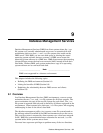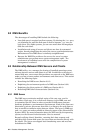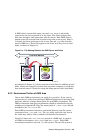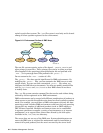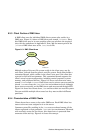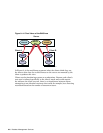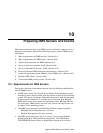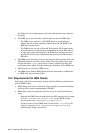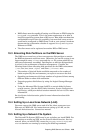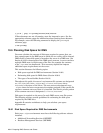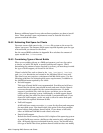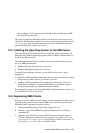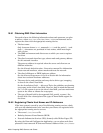• DMS clients must be capable of booting over Ethernet or FDDI using the
bootp and tftp protocols. This is the same requirement to be able to
install the operating system from a RIS server. Most Alpha workstations
and deskside servers have this capability, but most data center servers
would not be configured as DMS clients. Look at your system’s hardware
documentation to determine whether it supports bootp and tftp over
Ethernet or FDDI.
• The client must not be registered on another RIS or DMS server.
10.3 Allocating Disk Partitions on the DMS Server
The DMS server must have at least one separate disk partition to contain
the DMS environment and client areas. Otherwise, the root file system is not
large enough for many client areas and the var file system would fill up
after one environment was added. Deciding how to allocate disk partitions
is critical to the performance of dataless management. Consider the
following factors when allocating disk partitions for the DMS environment
(/var/adm/dms/dms
N .alpha) and client (/clients) area:
• The number of physical blocks available compared to the number of
blocks required by the environments you expect to create on the disk.
• Spreading environments with large numbers of registered clients among
different disks to reduce disk contention.
• Protecting against disk failures by using the Logical Storage Manager
(LSM).
• Using the Advanced File System (AdvFS) on certain disks for faster
system recovery. See the
AdvFS Administration, System Configuration
and Tuning, and System Administration manuals and advfs
(4) for more
information.
See the System Administration guide for more information about disk
partitioning.
10.4 Setting Up a Local Area Network (LAN)
You must connect the DMS server and all of the client processors to an
Ethernet or FDDI LAN. For instructions on setting up a LAN, see the
Network Administration: Connections manual.
10.5 Setting Up a Network File System
The Network File System (NFS) must be set up before you install DMS. For
instructions on setting up NFS, see the Network Administration: Services
manual. After you install NFS, ensure the portmap, mountd, nfsd, and
nfsiod daemons are running by entering the following command:
Preparing DMS Servers and Clients 10–3



